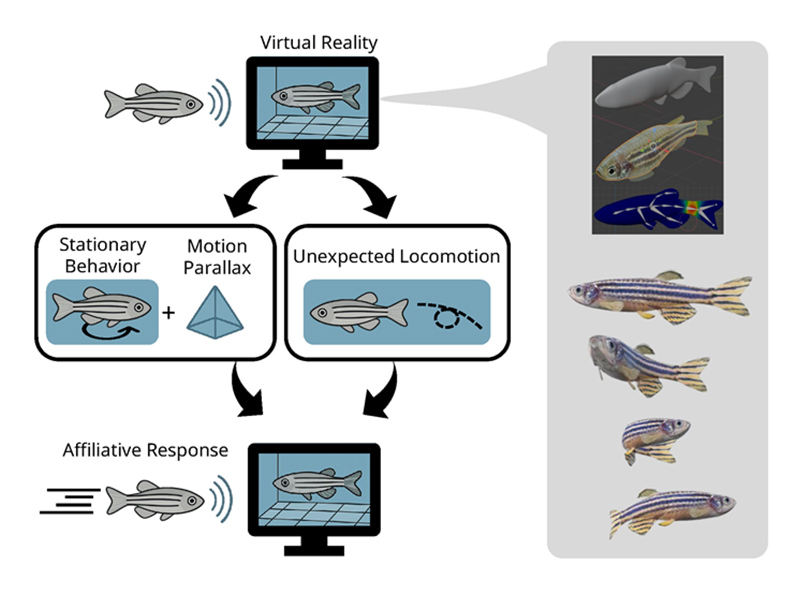Integration of social and depth information during affiliative behavior in zebrafish
Dr. Huang, Kuo Hua - July, 2025
During social interactions, individuals interpret others' behaviors differently depending on their distance - too close or too far can alter perception. How animals integrate social cues (such as behavior) with spatial distance (via depth vision) to guide their responses is a frontier in neuroscience research. Dr. Kuo-Hua Huang’s team at the Institute of Molecular Biology used zebrafish, known for their innate social tendencies, to investigate how the body movements and proximity of the same species shape social affiliation. They created lifelike virtual zebrafish with realistic tail bends, turns, and displacements, and simulated motion parallax through a game engine. They discovered that depth sensation can either enhance or suppress social affiliation, depending on the context, offering insights into how the brain integrates social and depth information. This research, led by lab members Jing-Yu Tsao, Chiao-Ya Tang, Cheng-Yu Chen, and Chih-Tsun Yang, was published in Current Biology on July 3rd, 2025, and funded by Academia Sinica’s Career Development Award and NSTC’s Early Career Project.
